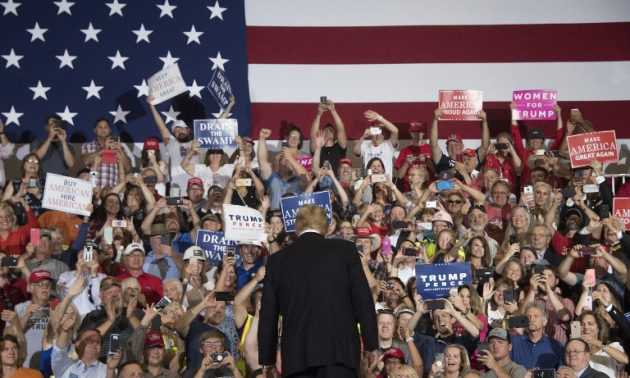Cautious optimism for trade truce as tariffs bite Trump country
18 August, 2018

The Trump administration’s trade war with China has already taken a toll on some US industries, but the full short- and long-term consequences of the conflict, should it escalate any further, could take years to tally. A report on Friday that US and Chinese officials are drawing up a “roadmap” to resolve the escalating trade dispute has prompted some optimism and comes as concerns grow among Trump’s political base ahead of important midterm elections.
Lost in the ivory tower debates about who will “win” the trade war are the wide-ranging side effects of such a confrontation. Much has been made of observations that the US economy is now “firing on all cylinders,” following massive corporate tax cuts that effectively dull the pain of tariffs.
But for the US agriculture industry, as well as many small and medium-sized enterprises, immediate pain is coupled with knock-on reputational costs. American farmers and small businesses have spent decades traveling to China to court business partners. The potential loss of goodwill that might come from a protracted trade conflict is hard to quantify.
It is these same farmers and entrepreneurs that helped US President Donald Trump stage a shocking election victory in 2016. In November, Trump is hoping they will go to the polls again to help his party retain control of the House of Representatives, a feat that increasingly looks like it will be as difficult as his election victory was.
Illustrating just how surgically China (along with Europe, Canada and Mexico) have struck Trump’s political base, the US Chamber of Commerce measured the distribution of retaliatory tariffs by state affected.
Not only were the top six states all places that voted for Trump in 2016, but three of them – Michigan, Pennsylvania and Wisconsin – were swing states that traditionally vote Democratic. All of the states have competitive House races that could help hand Democrats a majority in the House of Representatives, a development which could cripple some of Trump’s policy initiatives and weigh the White House down with ethics investigations.
Against this backdrop, the Trump administration appeared poised at one point in the spring to reach a deal with China to avert a tariff battle. Rival factions in the White House duked it out over whether to accept a Chinese deal to buy more energy and agriculture products or follow through on the tariff threats. Trade hawks led by US Trade Representative Robert Lighthizer and trade advisor Peter Navarro won over the president in the end, and the trade war ensued.
Farmers were the first to suffer materially. A corn and soybean farmer from Nebraska, deep in the heart of Trump country, summed up the devastating consequences of the trade war in an editorial earlier this month.
“The markets that we have nurtured and developed over decades have been decimated by the administration’s tariffs. Having personally been involved in promoting US soybeans in China, Mexico, and around the world, it is heartbreaking to see all that hard work, not to mention farmer- and taxpayer-invested funds, tossed aside due to a flawed protectionist theory,” lamented the farmer, Bart Ruth.
For small businesses, the consequences are harder to measure, but they are more vulnerable than larger firms, as they become collateral damage due to the tariffs placed on Chinese imports they rely on for production.
While small business owners overwhelmingly supported Trump’s tax cuts, the tariffs effectively cancel out the benefits of the tax cuts. In the case of some businesses, representatives of which recently testified to trade officials, the competitiveness of entire industries could be threatened.
While details are scarce, it was reported by The Wall Street Journal on Friday that midlevel talks next week in Washington between a Chinese delegation and US officials are a lead up to meetings between Trump and Chinese President Xi Jinping in November. It was noted that such meetings often create additional motivation for deliverables in ongoing negotiations.
Top White House economic advisor Larry Kudlow, along with Treasury Secretary Steven Mnuchin, has reportedly drawn up a specific list of asks for China, though it is not yet clear whether the president has made a final decision on whether he would be satisfied with the concessions.
Meanwhile, trade representative Lighthizer is lobbying for the administration to go ahead with an additional round of tariffs on US$200 billion of Chinese goods to further pressure Beijing.
As Trump shifts into campaign mode, pledging to campaign for Republican congressional candidates six days per week starting in September, his ultimate decision on striking a deal with China may come down to whether he feels it will give his party the boost it needs when voters go to the polls on November 6.
TAG(s):
